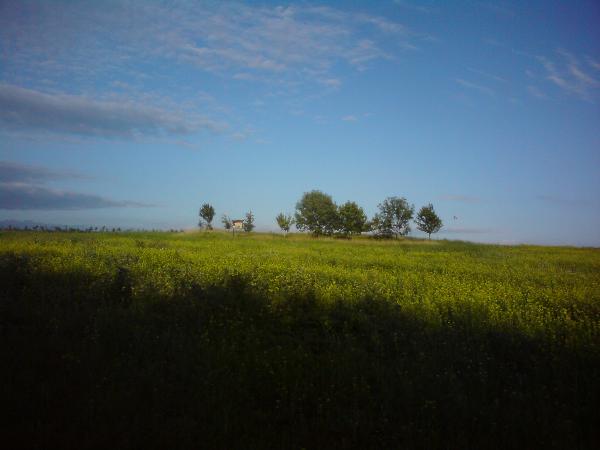CZ
Asi 1,5 km sv. od Blatnice pod Sv.
Ant., bezprostredne na vrcholu kóty Streckuv kopec (360,5 m n. m.)
a 800 m vjv. od kostela Sv. Antonínek se nachází malý jámový lom o
obvodu 30 m a hloubce maximálne 4 m slouzící v minulosti k
prílezitostné tezbe kameniva. Prístup je po hlinené polní ceste,
která ústí na silnici Blatnice - Ostrozská Lhota asi 0,3 km pod Sv.
Antonínkem. V lomu, který je soucástí belokarpatské jednotky
magurského flyse, jsou zachyceny svrchnokrídové sedimenty
antoníneckého souvrství (stárí okolo hranice kampán-maastricht).
Jde o jeho jediný známý odkryv a soucasne i typovou lokalitu, která
má znacný význam pro korelace v rámci flysového pásma Východních
Alp a Západních Karpat.
Ve východní stene lomu vystupuje cca
3 m mocná poloha svetle hnedave sedých, do bela ovetrávajících,
vrstevnatých, silne vápnitých jílovcu az slínovcu. Výse se nachází
asi 15 cm mocná vlozka svetle okrového slínu. Nad nimi je vyvinuta
cca 3 m mocná poloha cockovite nadurujících lavic hnedosedých jemne
píscitých vápencu o mocnosti 12 - 120 cm. Nejvýse vystupují
modrosedé vápence s vysokým podílem nekarbonátových klastu.
Slínovce poskytly spolecenstvo foraminifer s vápnitým bentosem a
drobným planktonem (hadbergely, heterohelixy). Druhove
diversifikované vápnité nanofosilie svedcí o kampánském stárí.
Podle detailního urcení planktonických foraminifer se vsak jedná o
mastricht, byly zjisteny druhy: Globotruncanella petaloidea
(Gand.), G. bavanensis (Voorw.), Globiderinelloides subcarinata
(Bronn).
Pro uznání logu je potreba:
1) vyfotit sebe nebo GPS u informacní tabuli
2) vyfotit sebe nebo GPS s píscitým vápencem
3) vyfotit sebe nebo GPS s modrosedým vápencem
4) vysvetlit pojem magursky flys
5) vysvetlit co to jsou klasty.

EN
Approximately 1.5 km north-eastward
from Blatnice pod Sv. Ant., directly on the top of Strecek's Hill
elevation point (360.5 meters above sea level) and 800 m
south-eastward from St. Anthony Church a small lava mine is located
with 30 m circumference and almost 4 m depth which in the past
served for occasional mining of aggregate. The site is accessible
on a clay rural road which opens on motorway Blatnice - Ostrozská
Lhota approximately 0.3 km below St. Anthony. Upper Cetraceous
sediments of St. Anthony measures (age around Campan-Maastricht
border) are caught in the mine, which is part of White Carpathian
mass of Magurian flysch. This place is its only known exposure and
at the same time a type locality with considerable significance for
correlations within the flysch range of Eastern Alps and Western
Carpathians.
The light brownish-grey stratified
and very calciferous claystones and marlstones, weathered white,
occupy approximately 3 m strong position in the eastern wall of the
mine. 15 cm strong layer of light ochreous marl is located above
it. Approximately 3 m strong position of lenticularly swollen beds
of brown-grey fine arenaceous limestones in thickness 12 - 120 cm
developed above these two layers. And blue-grey limestones with
high share of non-carbonaceous clastics extend at the top.
Marlstones provided community of foraminifers with calciferous
benthos and small plankton (hadbergels, heterohelices).
Species-diversified calciferous nanofossils evidence the Campanian
age. However, according to detailed specification of planctonic
foraminifers, it is Maastricht. The detected species include:
Globotruncanella petaloidea (Gand.), G. bavanensis (Voorw.),
Globiderinelloides subcarinata (Bronn).
For log approval it is necessary
to:
1) take a snap of oneself or GPS with information board
2) take a snap of oneself or GPS with arenaceous limestone
3) take a snap of oneself or GPS with blue-grey limestone
4) explain what is Magurian flysch
5) explain what are clastics.